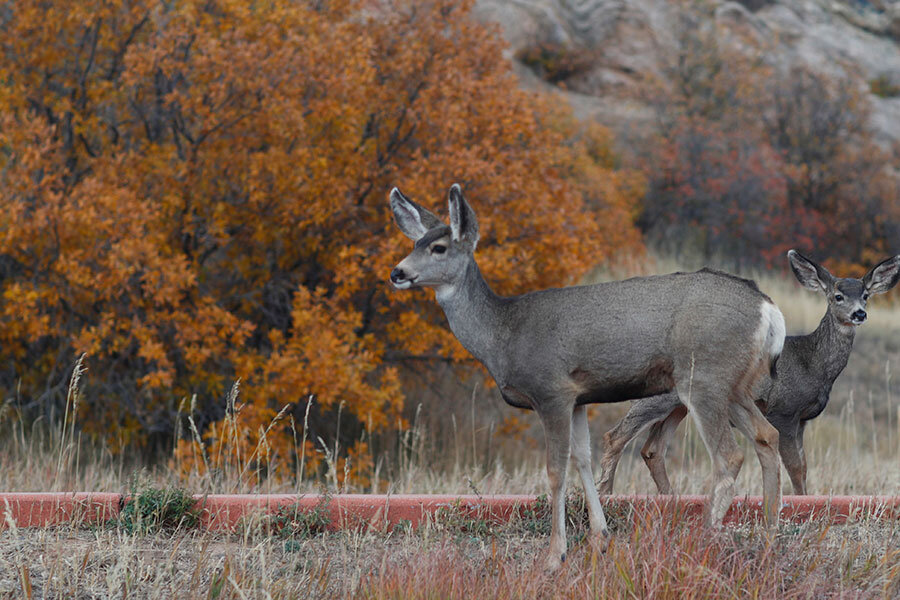'Predator control': Should Colorado kill its bears to save its deer?
Loading...
Despite widespread opposition throughout a year of public meetings, the Colorado Parks and Wildlife (CPW) commissioners voted unanimously on Wednesday to try out a controversial predator-control plan aimed at saving the state's dwindling mule deer population.
The $4.5 million strategy would involve the US Department of Agriculture's Wildlife Services using hounds, nonlethal traps, and snares to catch 15 mountain lions and 25 bears from around the Arkansas River Valley. Some animals, particularly families trapped together, would be relocated while others would be euthanized. The CPW's hope is that with fewer predators, more fawns will survive.
"We are trying to understand what contributes to it," commissioner Chris Castilian said before the vote, The Denver Post reports. "Our main motivation is to get to the bottom of the deer declines we've seen.... Everybody is concerned about the mule deer population. We need to be very sensitive as stewards of that. More science is always better."
But many challenge the scientific reasoning behind this particular management strategy.
"CPW’s plans to test the effects of predator removal are not based on science, and run counter to prior scientific evidence published by CPW’s own researchers," wrote Colorado State University professors Joel Berger, Kevin Crooks, and Barry R. Noon in an open letter to the agency, reported The Daily Sentinel. "We are concerned that CPW's proposals are based on a narrow response to a vocal (and diminishing) minority of the general public focused on predator control as means to increase hunting opportunities."
Hunting and fishing licenses make up 90 percent of CPW's budget and some are concerned that this management tactic has been put in place, at least in part, to increase deer hunting opportunities.
In protest, several activist organizations have formed a coalition, including the Humane Society of the United States, the Sierra Club, the Center for Biological Diversity, The Cougar Fund, and Wildearth Guardians. The group argued that big predators such as mountain lions and bears are too few in number for their populations to bounce back if so many are killed, and that as keystone predators, slashing their populations could have far-reaching consequences.
The plan's supporters argued that "predators have robust populations and should not be regarded as untouchables in a management plan," according to a CPW consultant’s summary of comments made at a public meeting.
Additionally, the environmental coalition provided evidence that humans, not natural predators, have contributed to the mule deer's decline. They pointed to disturbances such as oil and gas development and livestock grazing that have led to habitat destruction and food shortages.
CPW has not denied that any of these factors could be the cause of the increased deer deaths, arguing instead that they are simply testing a hypothesis to see if it works.
"We acknowledge that any and all those things can have an effect on mule deer," CPW's assistant director for research, policy and planning Jeff Ver Steeg said in a presentation to the commissioners. "We're in the business of learning. We have come up with a new hypothesis. We are proposing to act in the form of research. We haven't assumed it is predation. We haven't assumed it isn't."
The National Wildlife Federation straddles the fence, arguing on one hand that predators are not causing the decline, but sympathizing with the limited management strategies the CPW can afford to employ in this case.
"We believe that habitat degradation from energy, and residential development, which has been confirmed by the CPW biologists for years, should be the primary focus of scientifically-based wildlife management," Brian Kurzel, director of the region's the National Wildlife Federation, told The Denver Post.
"But this requires that CPW has adequate resources, including diversified and increased funding. CPW can be better prepared to take on the huge issue of habitat loss through incremental fee increases and broader species conservation funding that sportsmen and other wildlife conservationists can get behind."







